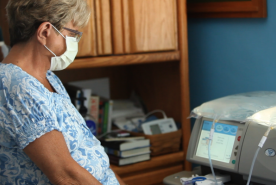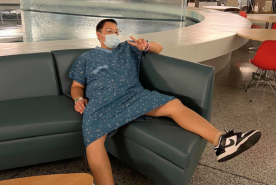Clinical trials are regulated by the FDA and reviewed by independent experts to ensure safety. Each phase of the trial checks the treatment's safety and effectiveness.
Are clinical trials safe?
Clinical studies in the United States are regulated by a government agency called the “Food and Drug Administration (FDA).” Each study is reviewed, approved, and watched over by an independent panel of qualified doctors, researchers, and members of the community called an “Institutional Review Board (IRB).” This review board makes sure your rights, safety, and welfare is protected, and that the study itself is being done for honest and ethical reasons. It also makes sure that the health risks involved are reasonable compared to the possible benefits. Remember, no treatment is completely safe for everyone; however, a clinical trial helps make sure the benefits outweigh the possible risks for most people.
Before a new treatment can be tested in humans, it goes through years of research in laboratories, followed by testing in animals such as mice or rats. After each phase of research, the clinical trial team submits an “Investigation New Drug” application (IND) to the FDA. Along with an independent ethics committee, the FDA reviews the results and decides whether the study can continue to the next phase. Once approved for human testing, the new treatment is studied in a very small group of people (usually 20-100). These studies are called “Phase I” studies. Gradually, the number of people involved will be increased until the testing reaches Phase III studies. After completing Phase III, the trial team submits a “New Drug Application” (NDA) to the FDA for approval. If the new treatment receives FDA approval, it can be put on the market for public use. In some cases, Phase IV trials might be conducted as well.
Why are clinical studies divided into phases?
Because each phase has a different goal or certain questions it is trying to answer. Knowing which phase a trial is in can be helpful, especially if you are trying to decide whether to participate. In general, phase I studies have the most potential risk, but they can also be very helpful, especially if you need access to a new treatment that is not yet available for public use.
Phase I studies are meant to find the best dosage that can be given without serious side effects. The first few people in the study will often get a low dose of the treatment and are watched very closely. If there are only minor side effects, the next few participants will get a higher dose. This continues until researchers find the dose that works best and with the fewest side effects.
Phase II studies are generally intended to study the new treatment in a much larger number of people (usually 100 to 300). The main objective is to see if it works and is well-tolerated in many people.
Phase III studies compare the new treatment to what’s currently available. Does the treatment work better—or as well—as treatments that are currently on the market? If it does not work as well, does it have fewer side effects? Do some people improve with this new treatment who did not improve with treatments that are currently on the market? Phase III studies involve large numbers of patients (300 to 3,000 or more) and are aimed at being the definitive assessment of how well the new treatment works in comparison with current 'gold standard' treatment.
Phase IV studies take place after the Food and Druge Administration (FDA) has approved a treatment for use by the public. Phase IV studies might look at the safety of a treatment in special populations, or over a longer period of time, or to address certain aspects that weren’t included in the original studies. For example, a phase IV study might want to find out if an FDA-approved blood pressure drug can also slow the loss of kidney function in people with kidney disease.








